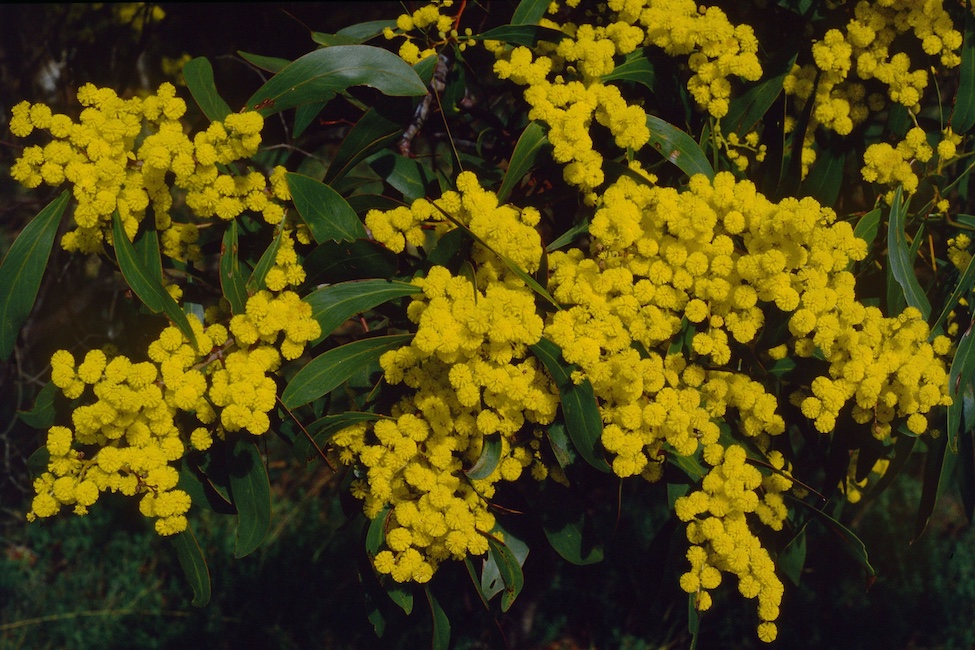PRESS RELEASE
9:00AM AEST
31.08.2020
For more than 25 million years, wattles or acacias (genus Acacia) have grown on land now known as Australia. They have adapted to all of Australia’s extreme environments and many species have evolved resistance to fire, salinity, drought, alkalinity and disease. Golden Wattle (Acacia pycnantha) is particularly revered as Australia’s national floral emblem, and for its appearance on our nation’s Coat of Arms.
The Genomics for Australian Plants (GAP) Initiative is a nationally-inclusive and collaborative initiative, which is supported by funding from Bioplatforms Australia through the Australian Government National Collaborative Research Infrastructure Strategy (NCRIS), the Ian Potter Foundation, Royal Botanic Gardens Victoria, the Royal Botanic Gardens and Domain Trust, CSIRO, Centre for Australian National Biodiversity Research and the Department of Biodiversity, Conservation and Attractions, Western Australia.
The genome of the Golden Wattle is being sequenced as the first of three pilot reference genome projects. The Acacia team include researchers from the Australian National Botanic Garden, Royal Botanic Gardens Victoria, Australian National Herbarium, Queensland Herbarium, the CSIRO, Australian Tree Seed Centre, Acacia Genome Consortium and researchers from overseas based at the Global Biodiversity Information Facility (GBIF), University of California Davis and University of Pennsylvania.
“We are delighted to be providing genomic resources in support of the conservation of Australia’s unique flora, ensuring our ecology remains resilient to climate change and is productive for our national food security,” said Andrew Gilbert, Chief Executive, Bioplatforms Australia. “It is great that one of our early priorities – the Wattle – is emblematic of Australia and holds a significant place in Australia’s national identity.”
Acacia belong to the same nitrogen-fixing legume plant family as peas and pulses, and acacia seeds contain as much as 25% more protein than common cereals. Nitrogen fixing properties are important as this reduces the use of fossil-fuel derived inorganic nitrogen fertilisers for farming.
Some acacias are economically important for their timber and other wood products, in tannin production (e.g. leather), as firewood and fodder, and in the perfume industry. Research is being undertaken on the use of Australian Acacia gum in the food industry. Golden Wattle is also cultivated widely in horticulture trade. It is also used for land remediation in temperate regions and wind-breaks on farms.
David Cantrill, Executive Director Science, Royal Botanic Gardens Victoria, said, “The sequencing of the genome of Golden Wattle will enhance genomic research undertaken to date. As a reference genome it will help us identify which genes are important using comparative genomics for Acacia species of conservation concern, and will boost biogeographic studies on widespread species. We want to identify the genes affecting traits of economic significance such as bioactive compounds or salinity resistance.”
The Genomics for Australian Plants (GAP) initiative aims to develop genomic resources to enhance our understanding of the evolution and conservation of Australia’s unique flora (which comprises more than 21,000 flowering plants species).
Current consortium members include Australian National Herbarium, Australian Tropical Herbarium, John Ray Herbarium – University of Sydney, NCW Beadle Herbarium – University of New England, Queensland Herbarium, Royal Botanic Garden Sydney, Royal Botanic Gardens Victoria, State Herbarium of South Australia, University of Melbourne Herbarium, Western Australia Herbarium Centre for Australian National Biodiversity Research, CSIRO, Department of Biodiversity, Conservation and Attractions Western Australia, Australian National University, La Trobe University, Southern Cross University (and the Medicinal Plant Herbarium), University of Adelaide, University of Melbourne, Western Sydney University, Atlas of Living Australia, and Terrestrial Ecosystem Research Network.
NOTE TO EDITORS:
About Genomics for Australian Plants
The key aims of the Initiative are to:
- Sequence and assemble representative Australian plant genomes across the tree of life to enable better conservation, utilisation and understanding of Australia’s unique plant diversity;
- Build genomic capacity across Australian Botanic Gardens and Herbaria to create networks collaborating in the collection, management, dissemination and application of genomic data for Australian plants;
- Provide tools to enable genomic data to be used to identify and classify biodiversity at a range of scales and to use these tools to inform conservation management and enable better decision making.
Genomics for Australian Plants consortium
- Atlas of Living Australia
- Australian Genome Research Facility (AGRF)
- Australian National Herbarium
- Australian National University
- Australian Tropical Herbarium
- Bioplatforms Australia
- Centre for Australian National Biodiversity Research
- CSIRO
- Department of Biodiversity, Conservation and Attractions Western Australia
- John Ray Herbarium – University of Sydney
- La Trobe University
- NCW Beadle Herbarium – University of New England
- Queensland Cyber Infrastructure Foundation Ltd
- Queensland Herbarium
- Ramaciotti Centre for Genomics, UNSW
- Royal Botanic Garden Sydney
- Royal Botanic Gardens Victoria
- Southern Cross University (and the Medicinal Plant Herbarium)
- State Herbarium of South Australia
- Terrestrial Ecosystem Research Network (TERN)
- University of Adelaide
- University of Melbourne
- University of Melbourne Herbarium
- Western Australia Herbarium
- Western Sydney University
Members of the Acacia genome project
- The Australian National Botanic Garden, Canberra
- Royal Botanic Gardens Victoria
- Australian National Herbarium
- CSIRO
- Australian Tree Seed Centre
- Acacia Genome Consortium
- Global Biodiversity Information Facility (GBIF)
- University of California Davis
- University of Pennsylvania

